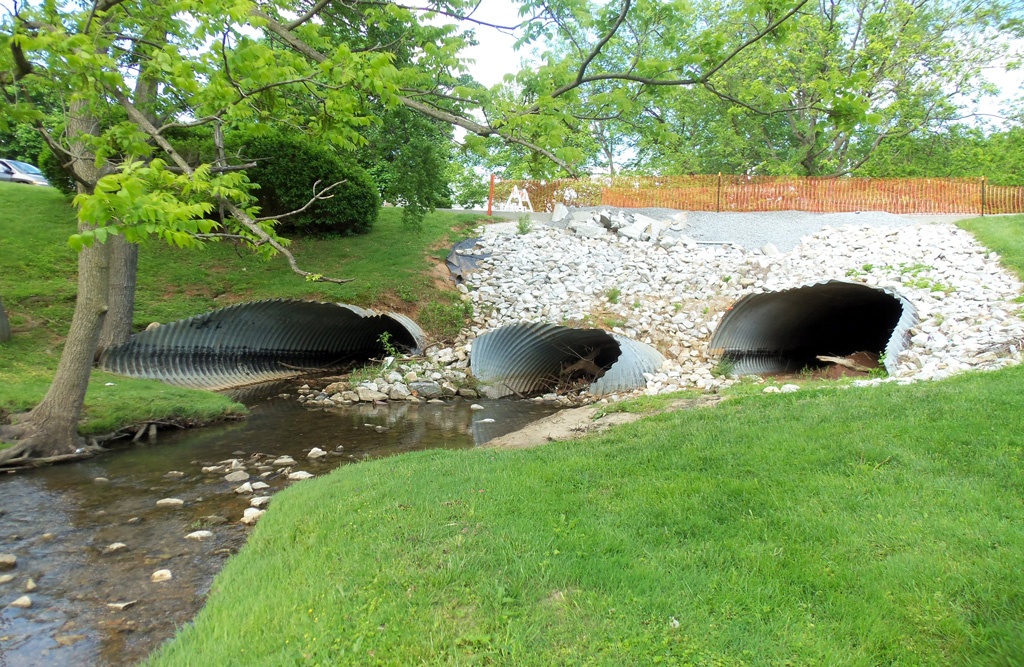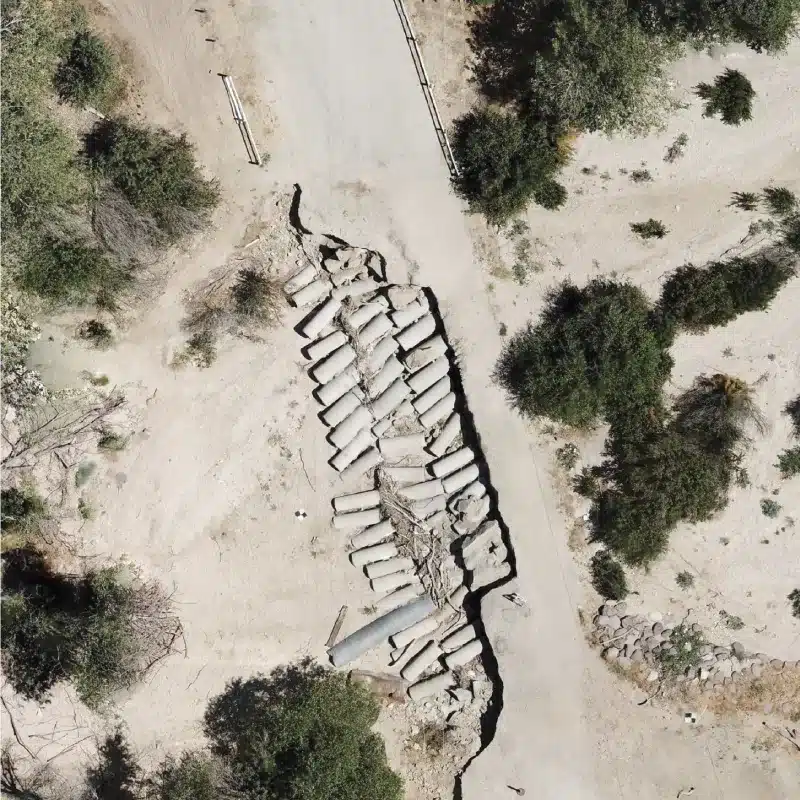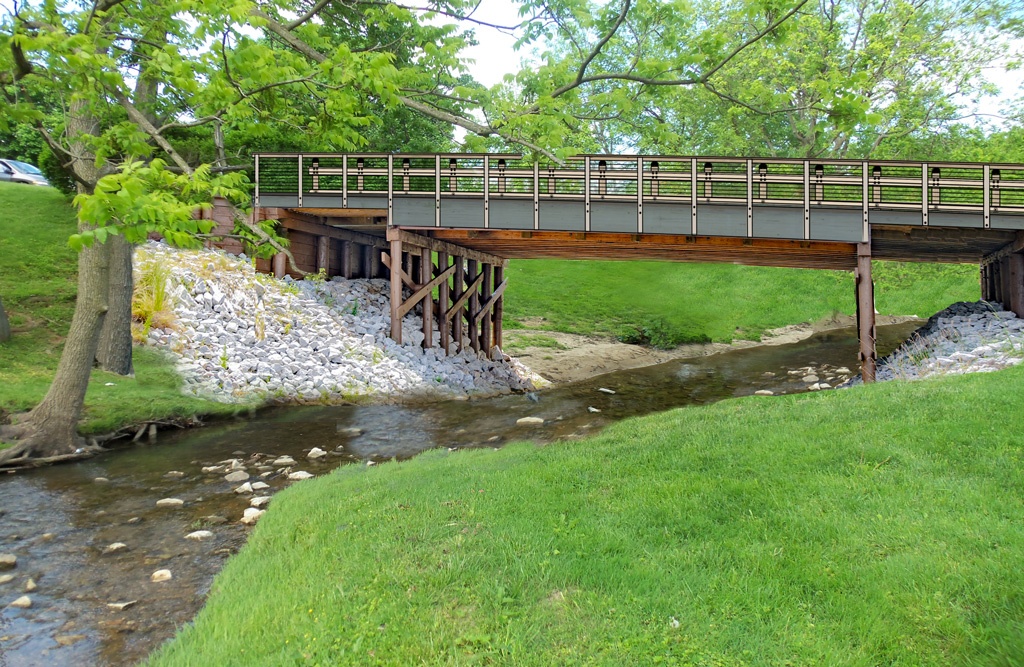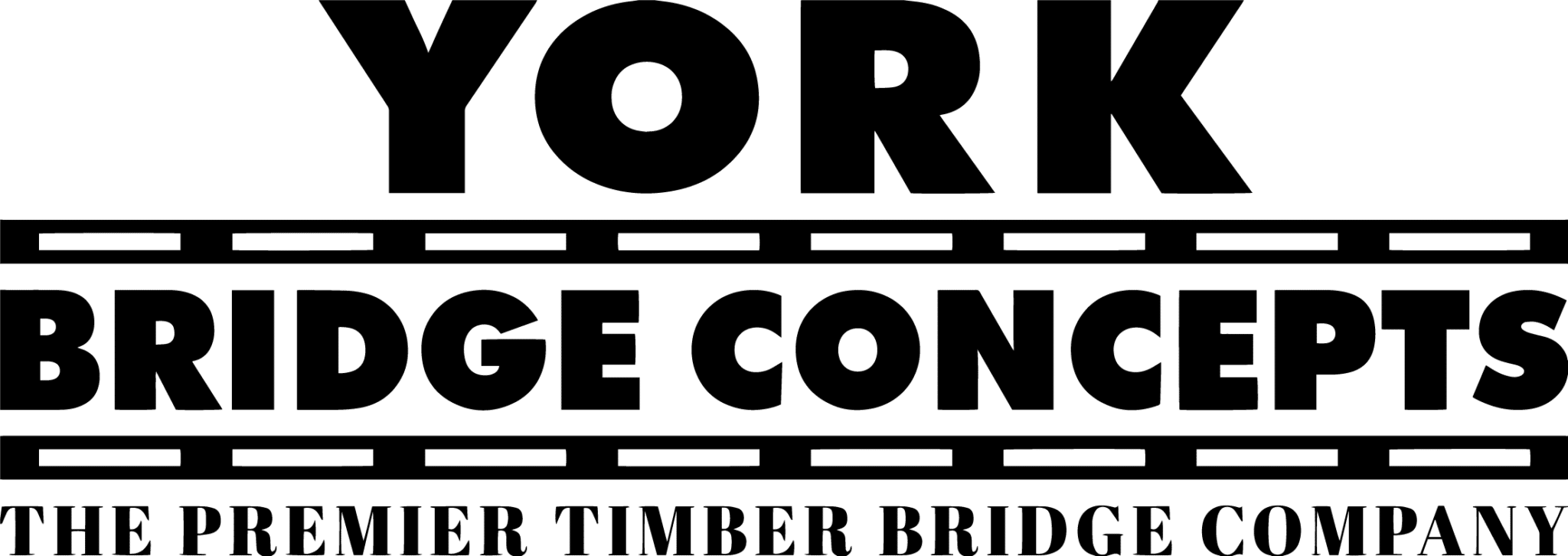
The Rules of Thumb for Culvert Crossings and the Benefits of York Bridge Concepts' Timber Bridges
Culvert crossings are a default option in infrastructure, particularly in rural and forested areas. They enable roads to cross waterways while ensuring proper drainage and preventing erosion. However, traditional culverts have limitations and often require meticulous installation and maintenance. This article explores the rules of thumb for culvert crossings and presents York Bridge Concepts' timber bridges as a superior alternative.
Understanding Culvert Crossings
1. Pipe Size and Installation
- Use pipes with a minimum diameter of 18 inches and 18 inches of clean, compacted cover. Smaller pipes are prone to blockages from debris like leaves and pinecones that can lead to overflow and or failure.
- Adequate material cover is critical to prevent pipe collapse under heavy loads. Ensure the backfill is free from large sticks, stones, and trash. Proper backfill material is often not factored into the initial budget and can result in a major expense.
- Timber bridges are constructed from renewable resources, reducing the environmental footprint compared to culverts made from steel or concrete. YBC uses sustainably sourced timber, ensuring minimal impact on forests.
- Timber bridges blend seamlessly with natural surroundings, enhancing the visual appeal of landscapes. Their rustic charm makes them ideal for parks, trails, and rural areas.
2. Cross Sectional Area Measurement
- Measure the culvert's cross sectional area to handle the flow during peak storm events. Proper sizing is crucial for effective drainage and preventing overflow.
- Use historical high-water marks to estimate the necessary pipe diameter, accounting for the stream's slope to ensure adequate capacity.
- Timber bridges provide unobstructed waterways, reducing the risk of flooding and erosion. They allow natural flow patterns to continue, supporting aquatic ecosystems.
3. Multiple Culverts & Placement
- When using multiple culverts, space them at least one culvert diameter apart to ensure proper compaction and prevent water from saturating the soil and causing erosion.
- Timber bridges offer design flexibility, allowing for customization to meet specific site requirements. YBC can design bridges to span various lengths and widths, accommodating diverse applications.
Case Study
Multiple Culvert System Failure
Thousand Trails Project in Acton, California

4. Compaction & Backfill
- Proper compaction of clean soil around the culvert is vital. Use granular backfill to enhance drainage and prevent piping failures, which occur when water seeps through voids in the soil.
- While the initial cost of timber bridges can be higher than culverts, the reduced maintenance, less backfill materials, less permitting requirements and longer lifespan make them a cost-effective solution in the long run.
5. Road Design Considerations
- Design roads with the possibility of overtopping to one side, allowing excess water to flow without damaging the road or downstream areas.
- YBC's timber bridges are engineered to handle significant loads, making them suitable for vehicular traffic, including emergency and heavy maintenance vehicles.
6. Side Slopes & Pipe Length
- Maintain maximum sideslopes of 2:1 (H:V) and ensure the road surface width is at least 12 feet to calculate the appropriate pipe length. Steeper slopes can lead to erosion and instability.
- YBC's timber bridges are designed for longevity with a designed lifespan of 75+ years. YBC uses timber with advanced treatment techniques to protect the wood from decay, insects, and weathering, ensuring a long service life.
7. Special-Use Pipes
- Consult professionals for special-use pipes like arch or elliptical pipes, which require specific installation techniques and materials.
- Compared to culverts, timber bridges are often faster to install. This reduces construction time and minimizes disruption to the surrounding environment.
8. Riprap Protection
- Add riprap to upstream and downstream approaches to prevent scour and erosion. Properly size and place the riprap to withstand the energy of storm flows.
- While the initial cost of timber bridges can be higher than culverts, the reduced maintenance, less backfill materials, less permitting requirements and longer lifespan make them a cost-effective solution in the long run.
9. Regular Maintenance
- Frequently check culverts for debris and blockages. Mark culvert locations to facilitate easy identification and maintenance, especially during snow or heavy rainfall.
- Timber bridges require less frequent maintenance than culverts. They are less prone to blockages and can be inspected easily, reducing long-term maintenance costs.
10. Professional Assistance
- Seek professional help when necessary. Improperly designed crossings can cause significant downstream damage and may require additional federal, state, and local permits.
- Timber bridges often require simpler permitting processes for environmental mitigation compared to culverts. They minimize disruption to natural waterways and habitats, making it easier to comply with environmental regulations.

Making The Right Choice
Culvert crossings are essential for managing water flow and maintaining roadways, but they come with challenges that require careful planning and maintenance. The ten rules of thumb for culvert crossings highlight the importance of proper design, installation, and upkeep.
However, York Bridge Concepts' timber bridges offer a compelling alternative with benefits in sustainability, aesthetics, durability, and overall performance. By choosing timber bridges, communities can enhance their infrastructure while preserving natural beauty and ensuring long-term reliability.
Create Your Legacy Today
Discover the intersection of strength, durability, and environmental responsibility with York Bridge Concepts. Let's build a bridge to the future together.
